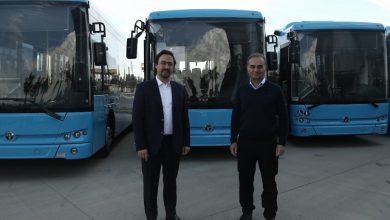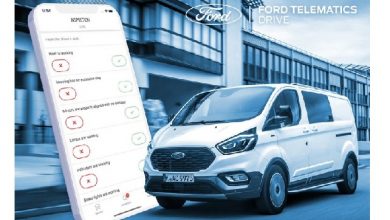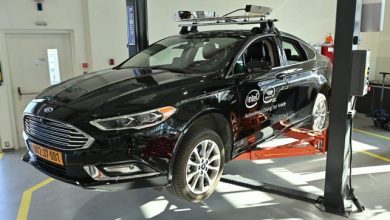Global Autonomous Trucking Market Report 2020: COVID-19 pandemic has underlined the need for autonomous trucks – forecast to 2040

The “Opportunities and Use Cases for Autonomous Trucking, Forecast to 2040” report has been added to ResearchAndMarkets.com’s offering.
Global trucking demand is on the rise with the consistent increase in capacity, need for faster transfer influenced by economic developments, new business ventures, and changing buying patterns. However, the trucking industry in general is plagued by concerns like driver shortage, vehicle price increases, fuel price volatility, road safety, and performance limitations amidst rapidly transformative freight handling, stocking, and distribution practices as well as infrastructure changes. Trucking, however, has remained conventional in general. Digitalization and the advent of technology have helped identify gaps and harness efficiency to the best.
Autonomous trucks are viewed as the next logical leap to overcome existing bottlenecks and to keep pace with the rapidly evolving ecosystem. The COVID-19 pandemic has underlined the need for autonomous trucks and their effectiveness during emergencies. With this pandemic, the industry faces issues such as driver shortage and severe commodity demand triggered by panic shopping. Autonomous vehicles (AVs) offer a solution to both the aforementioned with the capability of driving longer hours and safely. Logistics and shipping operators have been provided with a strong case to include self-driving trucks in their fleet as the means of a response action plan in the event of unforeseen emergencies.
Unlike humans with the limitation of operating hours, systems can operate trucks 24×7 effectively, increasing commodity flow within the freight value system. Perception and visual systems can acts as additional eyes to the driver, while analytics and predictive algorithms enhance attentiveness, thus helping the driver traverse through unforeseen events. Cost effectiveness of autonomous trucks will aid fleet operators achieve faster return on investment (RoI) and help address freight supply pressure.
Although the technology required to make trucks completely autonomous without drivers is still very nascent, the achieved capabilities have a variety of application scope. Features such as Advanced Emergency Braking, Adaptive Cruise Control, Lane Change Assist, and Reverse Assist are the first steps towards achieving a working package in the near future, while individually acting as safety and driver assist functions.
On the basis of SAE classification of the levels of autonomy, the industry is already well accustomed to absorb Level 1 and Level 2 technologies. The Level 1 feature is already predominant in the medium and heavy commercial vehicle (MHCV) segment with an estimated penetration of 45%, which is expected to grow exponentially, driven by regulatory stimulus, and reach 70% by 2020. All trucks are expected to possess at least Level 1 capability by 2030. Widespread launch and commercialization of the Level 2 feature is expected starting 2020, with its penetration forecast to reach 72% by 2040. OEMs are expected to skip Level 3 autonomy due to its similarity in terms of technology, functionality, and incremental costs with Level 4.
Achieving Level 4 trucking capability will be a major milestone that will enable trucks to operate without human intervention at any stage. Although deployment is still distant, Level 4 is the major focal point for manufacturers and start-ups, with several pilot runs and trials already in progress. Level 4 trucks are expected to be commercialized by 2025 and contribute to ~6.4% of the total general freight tonnage carried annually in the United States by 2040, which will lead to savings of ~$4.75 billion on the annual freight bill.
North America and Europe are leading the global autonomous truck transition with many industry stakeholders based out of or testing vehicles in these regions. Cross-brand platooning trials were conducted in European test beds to understand the applicability scope of the technology. Many cities are upgrading their underlying infrastructure to enable V2V and V2X transmissions needed for trucks to operate autonomously. Government-funded initiatives with collaborative efforts from multiple and diverse industry participants are being done to fast-track the development of autonomous trucks.
Liability remains one of the most significant hurdles for autonomous driving. Regulations remain rudiment and not exhaustive in terms of functional requirements and are very conservative with respect to deployment on public roads. In effect, they mandate a certain level of safety features to be a requirement for the sale and registration of trucks. Industry stakeholders need to be provided with a comprehensive framework and guidance plan to explore, take next steps, and invest suitably in relevant development areas.
Incumbent OEMs such as Daimler, Volvo, Paccar, Scania, and MAN are spearheading the transition with development already having reached the testing phases. Level 1 and Level 2 features are being offered both as standard and optional based on regional preferences. Start-ups such as Peloton Technology, TuSimple, Embark Trucks, and Waymo have taken noticeable steps to potentially capture market in large volumes. Technology and algorithm providers are key players in development of technology; hence OEMs are acquiring and engaging in partnerships and alliances to leverage domain expertise and to keep pace with the transition.
Key Topics Covered:
1. Executive Summary
- Key Findings and Market Outlook
- Autonomous Driving Value Proposition
- Autonomous Systems will Enable Truck-as-a-Service
- Major Influences on Autonomous Trucking – 2020 to 2040
- Forecast of ADAS Features in Trucks – By Sales Unit with Fitments
- Automated Driving Definitions
- Levels of Vehicle Automation
- Impact of SAE Definitions
- Factors Influencing the Shift towards Autonomous Trucking
- Market Trends in Autonomous Trucking
- Research Scope
- Research Aims and Objectives
- Key Questions this Study will Answer
2. Autonomous Trucking Technology – Overview
- Functional Block Diagram for Autonomous Trucks
- ADAS Features – Relevance to Usage Applications
- Key Challenges to Autonomous Driving in CVs
- Implications of Autonomous Technology in Trucks
- Impact of Autonomous Driving on Industry Stakeholders
- Impact of COVID-19 on the Autonomous Truck Market
- ADAS Market Assessment in the COVID-19 Scenario
3. Application of Autonomous Trucking Technologies in 2019, 2030, and 2040
- Logistics – Make to Sale
- Port – Ship to Dispatch
- Refuse – Collection to Disposal
- Implementation Roadmap of Autonomous Trucks – By Use Cases
- L1 and L2 ADAS Fitment Forecast for MCVs – EU
- L1 and L2 ADAS Fitment Forecast for HCVs – EU
- L1 and L2 ADAS Fitment Forecast for MCVs – North America
- L1 and L2 ADAS Fitment Forecast for HCVs – North America
- Progression of Automation in HD Trucks
- Autonomous Truck Market Value – Forecast for Incremental Fitment Cost
- Tele-operation for Autonomous Trucks
- Freight Transfer Hubs – For Long-haul Autonomous Trucks
- Truck Platooning Benefits and Challenges
- Platooning – Phases I, II, and III
4. Key Elements of Autonomous Trucking – Technology, Investments, and Infrastructure
- Supplemental Infrastructure Development – Ongoing Field Projects
- V2X Technology Evolution for Piloting Autonomous Trucks
- Autonomous Product Pipeline Plan of Major OEMs
- Autonomous Product Roadmap
- Autonomous Companies to Look Out For
- Strategic Partnerships in the Industry
- Autonomous Trucking Ecosystem
- Value Map by Ecosystem Participants
- Building Blocks of an Autonomous Truck
- Autonomous Truck Technology Roadmap – Hardware Focus
- Autonomous Truck Technology Roadmap – Software Focus
- Platform-based Approach for Future Vehicle Development
- Technology Evolution – Radar Module
- Technology Evolution – LiDAR Module
- Technology Evolution – Forward Camera Module
- Role of Sensor Data Fusion by Level of Automation
- Levels of Autonomous Driving and Sensors
5. Full Autonomous Vehicles – Progression Outlook
- Validation and Testing of Automated Vehicles
- AV Testing and Deployment Laws – North America
- Legislative Initiatives in the United States for AVs
- EU Member States’ Initiatives for Testing of Automated CVs
- Regulatory Overview – North America and Europe
- Pilots, Trials and Testing – Major OEMs
- Pilots, Trials and Testing – Major Start-ups
- Authority Initiatives and Research Projects
6. Freight Model Forecast for 2030 – For L4 Autonomous Vehicles
- L4 AV Forecast – General Freight
- Penetration of L4 Autonomous Trucks – By Segment
- Estimation of Annual Freight Cost – For General Freight
7. Growth Opportunities
- Growth Opportunity 1 – Applications and Expansion
- Growth Opportunity 2 – Regulations and Liability
- Growth Opportunity 3 – Investments and Partnerships
- Strategic Imperatives for Success and Growth
8. The Last Word
Companies Mentioned
- Daimler
- Embark Trucks
- MAN Peloton Technology
- Paccar
- Scania
- TuSimple
- Volvo
- Peloton Technology
- TuSimple
- Waymo





